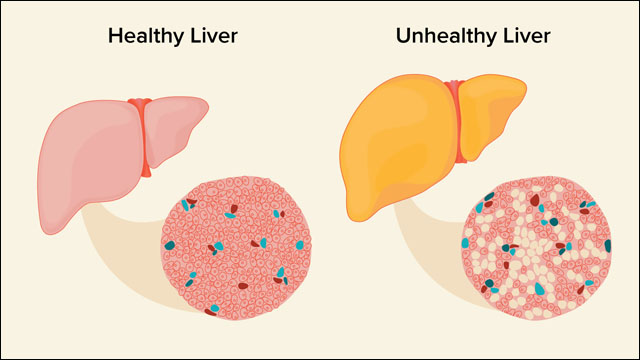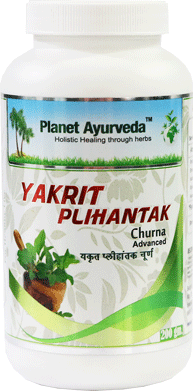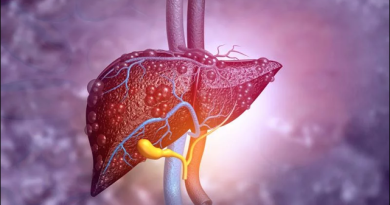Ayurvedic Treatment for Fatty Liver – Causes, Symptoms & Natural Solutions
Abstract
Fatty liver, also known as hepatic steatosis, is a growing global health concern affecting approximately 25% of the world’s population. It occurs when excess fat builds up in the liver cells, leading to impaired liver function. If left untreated, fatty liver can progress to non-alcoholic steatohepatitis (NASH), fibrosis, cirrhosis, or even liver failure. This article explores the causes, symptoms, and treatment strategies of fatty liver, with a focus on the effectiveness of ayurvedic medicine for liver care and the use of natural remedies for liver cleansing, such as Yakrit Plihantak Churna. This formulation is known for its detoxifying, anti-inflammatory, and liver-protective properties, making it an effective option for managing fatty liver.

Introduction
The liver is one of the most vital organs in the body, responsible for so many functions, including filtering out toxins and harmful substances, producing bile that helps digest fats, the liver plays a major role in keeping everything running smoothly. It also helps regulate hormones, stores vital nutrients, and plays a central part in the metabolism of fats, proteins, and carbohydrates, basically helping convert the food we eat into the energy our body needs. A healthy liver is essential for overall well-being. However, poor lifestyle choices and underlying health conditions are increasingly contributing to the rise in fatty liver cases.
Causes of Fatty Liver
There are several causes of fatty liver, categorized into alcoholic and non-alcoholic origins
- Obesity
- Insulin resistance
- Type 2 diabetes
- High cholesterol/triglycerides
- Alcohol consumption
- Poor diet
- Rapid weight loss
- Sedentary lifestyle
- Genetics
- PCOS
- Hypothyroidism
- Certain medications
- Malnutrition/starvation
- Toxins and chemicals
Symptoms of Fatty Liver
In many cases, fatty liver is silent and does not cause noticeable symptoms in its early stages. However, as the condition progresses, one may experience
- Feeling tired all the time, even without doing much.
- A sense of heaviness or discomfort in the upper right side of the belly.
- Not feeling hungry like usual.
- Losing weight without trying.
- General body weakness or low energy.
- Feeling nauseous or uneasy in the stomach.
- Yellowish tint in the eyes or skin, especially in advanced stages.
- Swelling in the legs or the belly area.
- Trouble focusing
- Dark patches on the neck or underarms
Diagnosis of Fatty Liver
Diagnosis of fatty liver involves the following steps
1. Physical Examination
- Assessment of symptoms
- Family history
- Medical history
2. Blood Tests
- ALT (Alanine transaminase) ↑
- AST (Aspartate transaminase) ↑
- Lipid profile
3. Imaging Tests
- Ultrasound
- CT Scan or MRI
- FibroScan
4. Liver Biopsy
Solutions for Fatty Liver
Managing fatty liver involves lifestyle modifications and therapeutic support
1. Diet and Nutrition
- Foods to Include
- Eat fruits and vegetables
- Drink plenty of water
- Low-fat dairy
- Choose whole grains
- Foods to Avoid
- Sugar & sweetened drinks
- Fried & oily foods
- Alcohol
- Full-fat dairy
- Too much salt
2. Lifestyle
- Practices to Include
- Walking 30 mins daily
- Get 7-9 hours of sleep
- Yoga such as Tadasana (Mountain Pose), Uttanasana (Standing Forward Bend and Naukasana (Boat Pose))
- Pranayama (Breathing exercises) such as Kapalbhati (Skull Shining Breath), Ujjayi (Victorious Breath) and Bhastrika (Bellows Breath)
- Practices to Avoid
- Sedentary lifestyle
- Overexertion in exercise
- Smoking
- Excessive alcohol
- Chronic stress
3. Medications
- Insulin Sensitizers
- Lipid-Lowering Agents
- Antioxidants
- Corticosteroids
Ayurvedic Aspect of Fatty Liver
In Ayurveda, the liver is referred to as “Yakrit”, and it holds a central role in maintaining metabolism and overall health. Any disruption in its functioning leads to Yakrit Vikaras (liver disorders). When there is enlargement of the liver, it is termed Yakrit Vriddhi or Yakrit Dalludara in Ayurveda treatment. Depending on the doshic imbalance, it can be classified further:
- Kaphaja Yakrit Dalludara (enlargement of the liver): Caused by an increase in Kapha dosha, leading to swelling or enlargement of the liver.
- Medaja Yakrit Dalludara (enlargement of the liver): Occurs when Meda dhatu (body fat) accumulates in the liver, often due to poor digestion and sedentary habits
Nidana (Causes) of Fatty Liver
- Disturbed Agni (digestive fire)
- Blocked Srotas (body channels)
- Atisnigdha Bhojan (oily foods)
- Viruddha Aahara (junk food)
- Atimatra Bhojan (Overeating)
- Avyayama (Lack of physical activity)
Samprapti (Pathogenesis)
When Agni (digestive fire) is weak, food isn’t properly digested, resulting in Apakva Anna Rasa (improperly formed nutritional essence). This causes an imbalance in Kapha dosha (Kapha type body humor) and accumulation of Meda (fat tissue) in the liver. The excess fat leads to Srotorodha (blockage of bodily channels), particularly in the Annavaha Srotas (digestive channels), Rasavaha and Raktavaha Srotas (nutrient and blood channels), Medovaha Srotas (fat-carrying channels), and Pureeshavaha Srotas (waste elimination channels). As Kapha and Meda (Fat) increase, they disturb Vata dosha (Vata type body humor), leading to further Agnivikruti (digestive disturbance) and weakening of liver function. When Pitta dosha (Pitta type body humor) gets involved, it leads to inflammation, similar to NASH (Non-Alcoholic Steatohepatitis). If untreated, aggravated Vata can cause fibrosis and progress to serious conditions like cirrhosis, ascites (fluid accumulation), or even liver cancer.
Roop (symptoms) of Fatty Liver
- Ajirna (Indigestion)
- Aadhmana (Abdominal distention)
- Atisara (diarrhoea)
- Daurbalya (Lethargy)
- Sthaulya (Obesity)
- Amlapitta (Hyperacidity)
- Kamala (Jaundice)
- Pandu (Anemia)
Ayurvedic Management
Various natural remedies, including herbal formulations, detoxification, and lifestyle modifications, aim to reduce fat accumulation, improve digestion, and support liver regeneration.
Herbs
- Bhumi Amla (Phyllanthus niruri) – Detoxifies and protects liver
- Punarnava (Boerhavia diffusa) – Reduces swelling and supports liver function
- Kalmegh (Andrographis paniculata) – Boosts digestion and reduces liver fat
- Kutki (Picrorhiza kurroa) – Strong liver detox and regeneration herb
- Guduchi (Tinospora cordifolia) – Balances doshas, anti-inflammatory
- Triphala (Haritaki, Bibhitaki, Amalaki) – Cleanses liver and supports digestion
- Aloe Vera (Kumari) (Aloe barbadensis) – Removes toxins, supports liver health
- Turmeric (Haridra) (Curcuma longa) – Repairs liver cells, anti-inflammatory
- Licorice (Yashtimadhu) (Glycyrrhiza glabra) – Soothes and protects liver tissue
- Makoy (Solanum nigrum) – Helpful in liver enlargement and discomfort
Home Remedies
- Buttermilk with cumin & black salt – Aids digestion
- Coriander seed water – Cools and detoxifies
- Fenugreek seeds – Improves metabolism
- Amla juice – Rich in antioxidants, protects liver
Panchakarma Therapies (Detoxification Therapies)
- Virechana (Therapeutic Purgation): Helps eliminate excess Pitta dosha and toxins from the liver and intestines.
Herbal Remedy for Fatty Liver


Yakrit Plihantak Churna
This herbal formulation contains a blend of liver-friendly herbs such as Bhumi Amla (Phyllanthus niruri), Kalmegh (Andrographis paniculata), Kaasni (Cichorium intybus), and Kutki (Picrorhiza kurroa), along with several other herbs known for their detoxifying and regenerative properties. These herbs have Tikta (bitter) and Katu (pungent) rasa (taste), which help balance aggravated Pitta and Kapha doshas. Together, these herbs work synergistically to cleanse the liver, stimulate its functions (Yakrit Uttejan), and promote overall liver rejuvenation, making Yakrit Plihantak Churna an excellent natural remedy for maintaining liver health.
Conclusion
Fatty liver is a reversible condition if diagnosed early and managed appropriately. A combination of diet plan of Fatty Liver, physical activity, and herbal support plays a critical role in recovery. The integration of Ayurvedic medicine for liver care and the adoption of a natural remedy for liver cleansing can provide a gentle yet powerful approach to healing and maintaining a healthy liver. As awareness of natural and holistic healthcare grows, Ayurveda offers time-tested solutions that align with both prevention and treatment of liver-related disorders.




